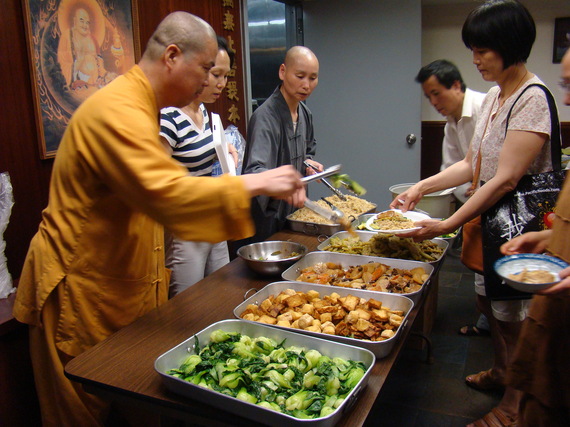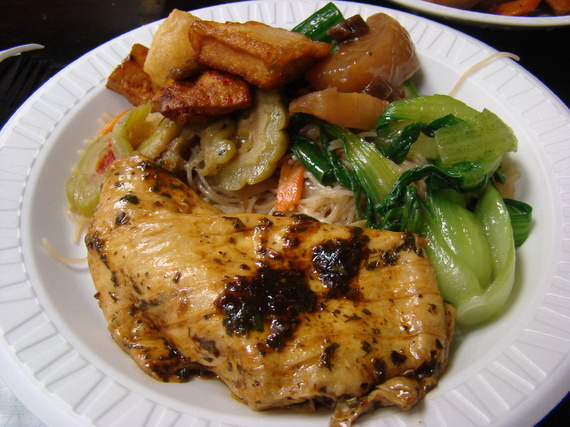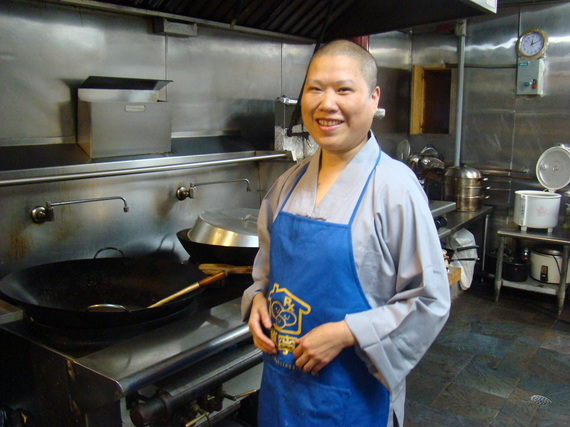This piece is the first of four that describes food cooked in religious houses of worship.
Every Sunday, the Grace Gratitude Buddhist Temple opens its doors to its congregation for prayers and to partake in a healthy, vegetarian meal.
Located on East Broadway, Chinatown., the temple has a nondescript entrance except for its welcoming green pagodas. Walking in, guests are greeted by the pleasant smell of incence that has been placed in front of the statue Guan Yin, bodhisattva of compassion, and the patron saint of the temple. Offerings of fruit surround the statue, and in the adjoining hall about 25 people chant scriptures in Mandarin Chinese.
Grace Gratitude is home to about 10 monastic monks and nuns who are clean shaven and wear brown and gray robes. They practice Pure land Buddhism, a branch of Mahayana Buddhism, and popular in East Asia. Lunch is prepared by volunteers for their congregation every Sunday, the first and 15 day of the lunar calendar, and on special ceremonial days (like the Buddha's birthday).
After reciting prayers, the congregation silently walk down to the basement to eat. Tradition dictates that the meal be first offered to the Buddha, thus everything has been prepared early in the day and includes appetising bok choy, Chinese cucumber, bitter mellon, noodles, fried tofu, and soup made with Japanese pumpkin and seaweed. The congregation wait patiently in line, are served, and eat on communal tables with chopsticks.
Jingyi Shi, the abbess (head nun) and a seasoned cook, demonstrates the preparation of tofu skin. She fires up the wok and boils the tofu skin in water. After draining the tofu, she adds some soya bean sauce which is sizzled in oil for a few minutes. To this is added a few tablespoons of a ground mixture of Xiang Chun leaves (the tree is grown on the roof of the temple) and Chinese ketchup. The tofu skin is sauteed in this mixture for a few minutes. Salt is added in the end. The result is a dish that is unique and refreshing.
Simmi Li, a translator, explained that eating healthy is a priority at the temple.
"We eat bitter mellon which studies have found to be beneficial for cancer prevention and to purge toxins. We use very little oil and make sure everything is seasoned very lighly to make it flavourful."
BenKong Shi, an elder monk who lives at the temple, explained through email that most ordained monks and nuns are vegetarian. The lay community try to follow their example but many are not. He explained the reason for being vegetarian.
"Eating meat encourages an industry that causes cruelty and death to millions of animals and a truly compassionate person would wish to mitigate all this suffering."



